This piece is an introduction to job quality in the US food supply chain, with a focus on poultry and meat processing, and on farm labor. The piece also highlights the prevalence of child labor in these industries and the elevated risk for many immigrant workers in the food supply chain.
In this event, Rick Wartzman, author of “Still Broke: Walmart’s Remarkable Transformation and the Limits of Socially Conscious Capitalism,” considers the experience and history of Walmart moving toward a more conscious capitalism and the recent efforts the company has made to provide higher wages and better benefits and opportunities for its employees. Wartzman raises important questions about how much an individual company can do on its own to improve the quality of jobs and people’s ability to earn a living through their work; the degree to which business imperatives encourage companies to improve jobs and when those incentives conflict with that goal; and whether public sector action, through either labor market regulation or the provision of social supports, needs to be strengthened to ensure that work in today’s economy is contributing to an inclusive economy in which all can thrive.
In this event, Saket Soni, author of “The Great Escape: A True Story of Forced Labor and Immigrant Dreams in America,” discusses the story of a group of immigrant workers who experienced significant abuses in the US. Soni deals with these weighty questions by telling a gripping tale — a story of love, dreams, betrayal, greed, courage, redemption, and hope. Ultimately, it’s a story about learning to see across our society’s divides of race, ethnicity, class, gender, and geography to find our common humanity.
The Universal Declaration of Human Rights, adopted by the United Nations in 1948, set forth a set of civil, social, and economic rights that inspired the development of human rights’ laws around the world. In this context, the UN’s Office of the High Commissioner for Human Rights and The New School’s Institute on Race, Power and Political Economy announced the Partnership for a Human Rights Economy in 2022. In this event, panelists discuss the legacy and lasting influences of the Universal Declaration of Human Rights; the philosophies and values that have come to shape our economy, and their consequences; and ideas to build a moral and inclusive economy based on human rights.
The US government is the largest purchaser of goods and services in the world, spending over $600 billion per year. And public procurement exceeds $2.1 trillion annually when state and local governments are included. In this event, panelists consider what it would mean if good jobs principles were embedded in procurement decisions.
This article summarizes “The Rewards of Work: Lessons from the Fair Labor Standards Actt,” an Opportunity in America event EOP hosted in 2022 to explore the history of the FLSA and how it could be updated and strengthenedt to improve workers’ wages and working conditions.
This article summarizes “Worker Power and the National Labor Relations Act,” an Opportunity in America event EOP hosted in 2022 to explore how the NLRA could be updated and strengthenedt to support workers’ right to organize and join a union.
This article discusses the growing use of subcontracting work in the tech industry and the negative consequences this “fissuring” has had on job quality for workers.
Title VII of the Civil Rights Act made it illegal to discriminate in employment decisions on the basis of race, color, national origin, sex, or religion. Despite this, however, racial and gender wage gaps persist, discrimination still limits opportunity for many, and harassment continues to make many workplaces unproductive and unsafe. In this event, panelists discuss ongoing progress to realize equal opportunity at work, given the ever increasing diversity of the workforce. As we look to address the issues of today, and build toward a better future, what can we learn from the history and legacy of Title VII?
The Fair Labor Standards Act (FLSA) of 1938 established the federal minimum wage and overtime pay, created a standard work week, and prohibited children’s employment in dangerous conditions. But the FLSA doesn’t cover everyone — the legacy of biases against professions largely occupied by women and people of color — and it has suffered setbacks over the years. In this event, panelists discuss what what lessons we can learn from the FLSA, innovations to create a more just economy that rewards work fairly, and how we can restore the commitment to a fair day’s pay for a fair day’s work.
